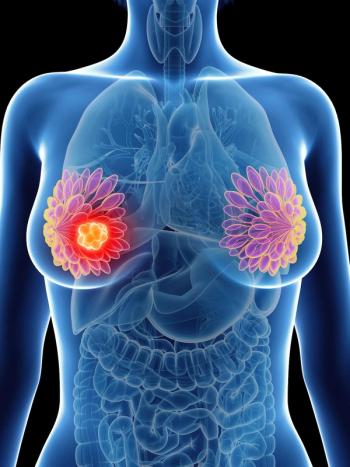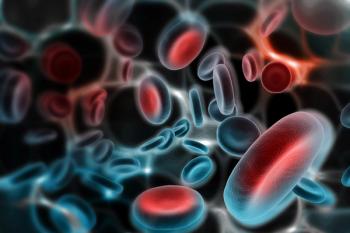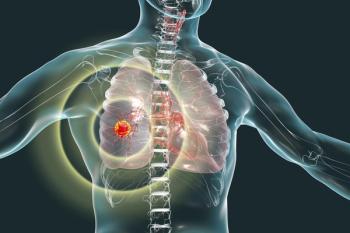
Oncology NEWS International
- Oncology NEWS International Vol 10 No 12
- Volume 10
- Issue 12
PET Used to Measure Efficacy of an Angiogenesis Inhibitor
TORONTO -Results from a phase I study suggest that endostatin, an inhibitor of angiogenesis, shows clear utility in treating cancer, but that this effect does not continue to increase with larger doses. Moreover, in assessing efficacy, reduction of tumor size does not provide the most useful immediate measure of the drug’s clinical benefit.
TORONTO Results from a phase I study suggest that endostatin, an inhibitor of angiogenesis, shows clear utility in treating cancer, but that this effect does not continue to increase with larger doses. Moreover, in assessing efficacy, reduction of tumor size does not provide the most useful immediate measure of the drug’s clinical benefit.
Nizar Mullani, speaking on behalf of his research team at The University of Texas M.D. Anderson Cancer Center and Medical School, presented the findings at the 48th Annual Meeting of the Society of Nuclear Medicine (abstract 1242).
Endostatin acts by inhibiting the replication of endothelial cells, which form the walls of capillaries. Since tumors must form their own capillary supply, drugs that inhibit endothelial cell division exert anticancer activity indirectly, by preventing formation of new capillaries, thus starving the tumor of nutrients.
Mr. Mullani and his colleagues examined the effects of intravenous endostatin, administered daily to 18 cancer patients in doses ranging from 30 to 300 mg/m².
Positron emission tomography (PET) scans were done at baseline and after 28 and 56 days on endostatin. In these scans, fluorine-18-labeled fluorodeoxyglucose (FDG) was used to estimate tumor metabolic rate, while oxygen-15-labeled water served as the probe for imaging tumor blood flow. In addition, tumor size was measured by CT scan at the 28-day time point.
Figure 1 shows PET scans of a liver tumor. The enhanced metabolism associated with the cancer is clearly visible in the FDG panel. In this example, the tumor does not show any increased blood flow, compared with the rest of the liver. Any such changes would be visible, as shown by the increase in brightness associated with higher blood flow in the spleen (seen to the right of the liver).
Figure 2 summarizes the data for tumor blood flow and metabolic rate at 28 and 56 days post-treatment, and tumor size at 28 days post-treatment.
Little effect on blood flow or metabolism is observed with the 30- or 60-mg doses, both of which showed increases in these parameters, in keeping with the continued enlargement of the tumors. At the highest endostatin dose (300 mg), reductions in both metabolism and blood flow are observed, even though tumor size increases slightly, suggesting that parts of the tumor may be turning necrotic.
However, the effects of endostatin are not linear with dose, as evidenced dramatically by the 180-mg patients. At that dose, metabolic rate is actually increased, along with tumor size, even though there is a marked decrease in blood flow that becomes particularly evident at 56 days.
"We are still in the process of learning how best to measure the effects of angiogenesis inhibitors on tumors, and clearly the results of our work require confirmation in larger scale studies," Dr. Mullani said. "Nonetheless, it seems reasonable to draw several inferences from these data."
• First, he said, PET-derived measurements of tumor metabolism and blood flow, particularly the latter parameter, appear to be more useful indices of tumor response than simple measurements of tumor size.
"Here we have observed that increased tumor size can be accompanied by reduced blood flow, implying that the tumor is approaching a crisis point even as it is still enlarging," Mr. Mullani said.
• Second, effective dosing with angiogenesis inhibitors may not follow the rule, typically observed with other chemotherapies, that maximal effects are obtained at the highest doses. For most agents, patients are prescribed the maximum tolerated dose, with rapid tumor cell killing accompanied by strong systemic effects. As a consequence, the treatment regimens involve considerable recovery times between successive drug administrations.
With endostatin, Mr. Mullani said, tumor shrinkage may require more time, but the drug can be given on a continuous basis, and studies show it is more effective given in that way. "The concept of maximum tolerated dose may not be relevant," he said.
• Finally, the potential for continuous application of angiogenesis inhibitors to restrict tumor blood flow implies that combination therapy, involving coadministration of more traditional drugs that attack cancer cells directly, may ultimately prove to be the most effective approach to eliminating the tumor.
"We are still in the early stages of application of the angiogenesis inhibitors, but it is clear that they have great potential in developing new treatments for cancer," he said.
Articles in this issue
almost 24 years ago
Elderly Colon Cancer Patients Benefit From Adjuvant Chemotherapyabout 24 years ago
Stromal Cells May Be Involved in Development of Breast Carcinomaabout 24 years ago
Intercultural Facts About Cancerabout 24 years ago
18-Gene Cluster Found in ER-Positive Breast Cancersabout 24 years ago
Viread OK’d for Treating HIV With Other Antiretroviralsabout 24 years ago
Surgeons in New York Operate on Patient in Franceabout 24 years ago
Fulvestrant Reduces Cell Turnover Index More Than Tamoxifenabout 24 years ago
New Lung Cancer Campaign Launchedabout 24 years ago
CPDR Updates Its Prostate Cancer WebsiteNewsletter
Stay up to date on recent advances in the multidisciplinary approach to cancer.


















































































